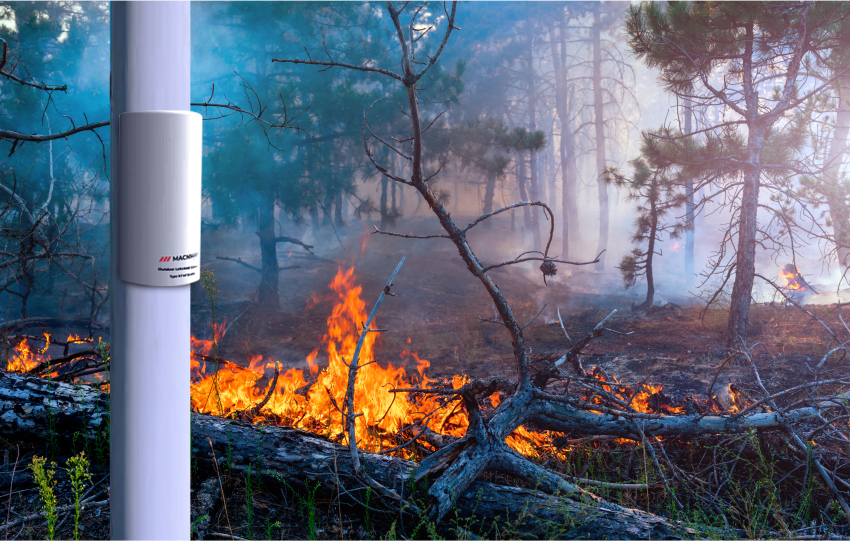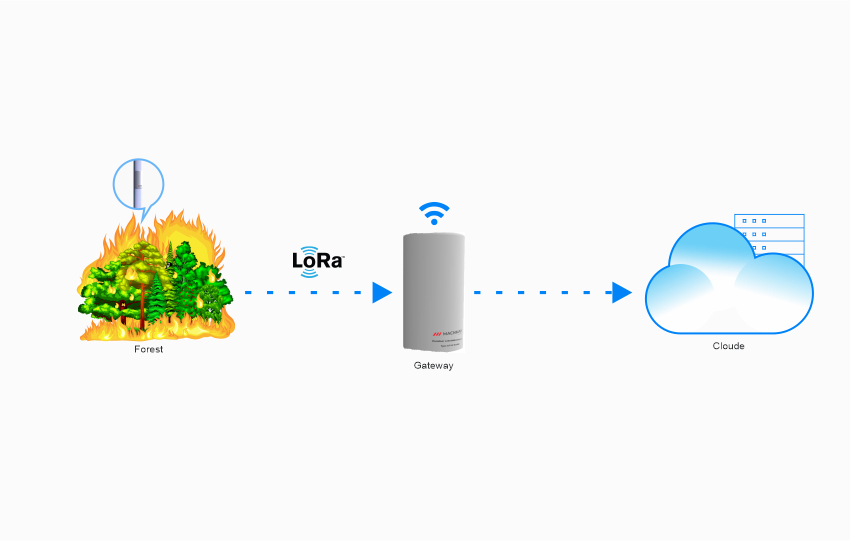
Forests are essential resources that provide numerous environmental, economic, and social benefits. They regulate the climate, purify the air and water, provide habitat for wildlife, and offer recreational opportunities. However, forests face various challenges that threaten their sustainability, such as illegal logging, wildfires, climate change, deforestation, and biodiversity loss. To ensure sustainable forest management, it is essential to monitor forest health and environmental conditions continually.
Forest monitoring is a critical task that involves tracking various environmental factors to ensure sustainable forest management. However, this process is often challenging due to the remote and rugged terrain of forested areas, which makes it difficult to collect data. To address these challenges, LoRaWAN technology has emerged as a viable solution for forest monitoring. LoRaWAN is a low-power, wide-area network (LPWAN) technology that allows for long-range communication and low-power consumption. This case study explores the use of LoRaWAN technology for forest monitoring and the benefits it offers.
Real-Life Challenges In Forest Monitoring:
Forests face various challenges, such as illegal logging, poaching, wildfires, climate change, and deforestation. These challenges can have devastating effects on the environment and biodiversity. Moreover, traditional forest monitoring methods are often labour-intensive, time-consuming, and costly, making it difficult to monitor large forest areas. These challenges make it essential to adopt innovative technologies that can provide efficient and cost-effective forest monitoring solutions.
Project Goals:
- Build up a reliable alarming system
- Get accurate measurements from all aspects
- Collect rich data widely from all kinds of sensors
- Enable fast and timely wireless data transmission

Solution & Implementation Using LoRaWAN Sensors
MACNMAN’s LoRaWAN products offer an innovative solution for forest monitoring. This technology enables the collection of real-time data on various environmental factors, such as temperature, humidity, soil moisture, and air quality, from remote forest areas. LoRaWAN networks consist of gateways that receive data from sensors placed in the forest. The gateways then transmit this data to a central server, which processes and analyzes it. LoRaWAN technology offers long-range communication, low-power consumption, and low-cost sensors, making it a cost-effective and reliable solution for forest monitoring.
LoRaWAN technology has been successfully implemented in various forest monitoring projects worldwide. For example, the European Union-funded IoF2020 project implemented a LoRaWAN-based forest monitoring system in Italy. The project deployed sensors to collect data on forest health, tree growth, soil moisture, and other environmental factors. The data collected was transmitted via LoRaWAN networks to a cloud-based platform, where it was analyzed to provide insights on forest health and management.
LoRaWAN technology also allows for the monitoring of remote forested areas, making it easier to monitor large forested areas. This is especially important for countries with vast forested areas, where traditional monitoring methods may not be feasible.
Finally, the data collected through LoRaWAN technology can be analyzed to provide insights on forest health and management. This data can inform forest management decisions, such as the timing and location of forest thinning, planting, and harvesting. It can also be used to detect environmental changes and assess the effectiveness of forest management strategies.
MACNMAN’s LoRaWAN Solution For Forest Monitoring will help:
- The water level in the river
- Underground water level
- Temperature and humidity monitoring
- Wind speed and direction
- UV radiation
- Rain precipitation
- Water quality - which includes the measurement of the dissolved oxygen, ph/ORP, conductivity
In the past, people usually used field and aerial surveys to collect data on forests. Now it is more common to use sensing technology to monitor the forest. In such a case, Macnman’s system proposes an intelligent forest monitoring solution based on the Macnman’s Mark LoRaWAN® Gateway and wireless sensors.
Benefits:
The use of MACNMAN’s LoRaWAN technology for forest monitoring offers several benefits. These include:
- Cost-effectiveness: LoRaWAN technology is a low-cost solution that requires minimal infrastructure and maintenance, making it a cost-effective solution for forest monitoring.
- Real-time monitoring: LoRaWAN technology enables real-time monitoring of various environmental factors, allowing forest managers to quickly respond to any changes.
- Remote monitoring: LoRaWAN technology allows for the monitoring of remote forest areas, making it easier to monitor large forested areas.
- Data-driven insights: The data collected through LoRaWAN technology can be analyzed to provide insights on forest health, tree growth, and other environmental factors, enabling forest managers to make data-driven decisions.
- ⮚ Quickly identify the changes through data
- ⮚ Get forest sites widely and regularly
- ⮚ Improve working efficiency
Conclusion:
In conclusion, MACNMAN’s LoRaWAN solution offers a reliable and cost-effective solution for forest monitoring. It enables real-time monitoring of various environmental factors, allowing forest managers to quickly respond to any changes. LoRaWAN technology also allows for the monitoring of remote forest areas, making it easier to monitor large forested areas. The data collected through LoRaWAN technology can be analyzed to provide insights on forest health and management, enabling forest managers to make data-driven decisions. Overall, LoRaWAN technology has the potential to revolutionize forest monitoring and ensure sustainable forest management.